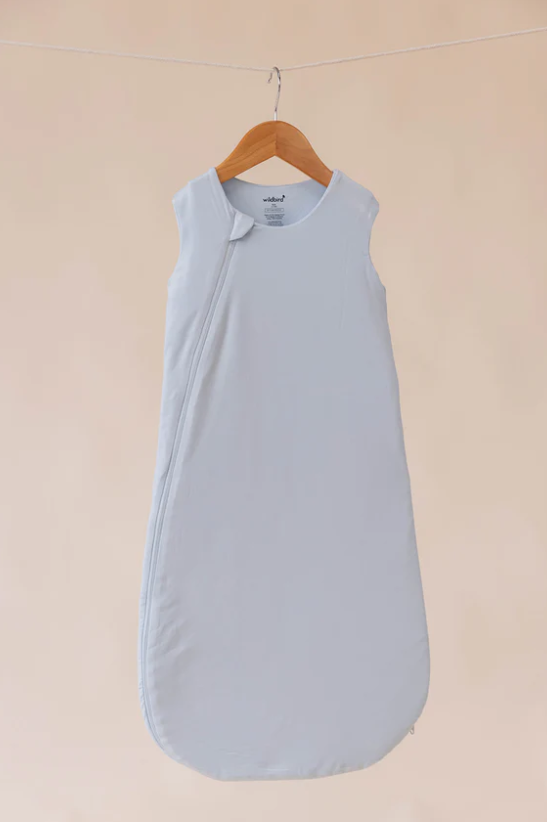How to Get Baby to Sleep Longer Stretches at Night
Sleep is a rare commodity for new parents. Between healing from childbirth, dealing with hormonal changes, adjusting to a new lifestyle and adapting to your newborns feeding schedule, sleep is something we don’t get enough of! Luckily, there are a few helpful tips on how to get a newborn baby to sleep longer stretches through the night.
Please keep in mind that with a newborn, you need realistic expectations. Newborns don’t fit a one-size-fits-all mold when it comes to sleep patterns. What works for baby A, might not work for baby B. Some babies suffer from colic, reflux, or just struggle transitioning from mamas’ warm, dark belly to the bright and colorful world!
Newborns also need to feed so often that sleep regression can’t take place until they are a few months of age. Practice patience and take advantage of any help or resources you have available to you during your sleep training journey!
Tips for Getting Baby to Sleep Long Stretches
Establish a Nighttime Routine
Getting baby onboard with a consistent bedtime routine is so helpful in creating sleeping associations. Baby will associate certain actions with the feeling of tiredness and anticipate sleep.
You can try singing, bath time, reading a bedtime story, or rocking in a rocking chair. This is such an important factor when it comes to nighttime sleep training!
My go-to when my son was born was a diaper change and bottle feed while humming a lullaby and rocking in his rocking chair. I would have the Hatch Rest+ playing white noise in the background with the lights off before laying him to sleep.
Blanket Baby in a Swaddle
Newborns were all cuddled up in a tight space in mommas’ belly before being born into this world. Imitating the environment of mommas’ belly is a good idea for soothing baby! Swaddling is also great for preventing jerk reflexes babies have that can wake them up from a deep sleep. Avoid this if baby can roll over and switch to a sleep sack.
Play White Noise
White noise worked great in soothing my little one, but one thing I didn’t know? It needs to be loud! We are trying to recreate the environment of being in moms’ belly which is surprisingly loud according to studies.
I made the mistake of playing white noise on a low volume setting at first, only to realize that the louder volume had a much greater impact on keeping my son asleep.
Great sounds to play are sounds of vacuum cleaners, heavy rain, TV static, or any general white noise. You can access these sounds on YouTube or purchase a Hatch Rest+ white noise machine which has a variety of sounds and lights for children.
Encourage Exposure to Natural Light
As babies’ circadian rhythm develops, it’s important to expose them to daylight. This will help them develop their internal clock in order to identify when it is daytime or nighttime which is great for establish a newborn sleep schedule. Getting them outdoors on warm days and promoting lots of interaction would be ideal!
Feed Baby Before YOU Go to Bed
A full belly will certainly help baby sleep. Before I started using this tactic called a dream feed, I would put my son down, stay up to finish chores for another 2 hours, and then he would wake shortly after I shut my eyes. This is why it’s so important to make sure baby is fed before right before you go to sleep!
A dream feed is when baby has been laid to sleep but will take a night feeding without waking. Using a night light or hatch rest light is great as it prevents lighting up the whole room and waking baby. A soft red light setting is known to be the best color for sleep when it comes to babies.
Limit Extended Naps During the Day
If baby is taking 3-4 hour daytime naps, they aren’t going to sleep longer stretches during the night. 2 hours is an ideal nap length. Not only is this great for extending wake time, it allows for more feedings during the day to meet babies dietary needs.
Try to feed right after waking baby followed by playtime and lots of interaction. Keep in mind that young babies should have wake windows of about an hour at a time – maybe even a little less.
Monitor Room Temperature
68°-72°F (20°-22°C) is a comfortable temperature for baby to sleep in when dressed in light, breathable clothing and a lightweight sleep sack. Keep in mind that humidity may affect this as it feels warmer in high humidity. I have an in-depth post about how to properly dress babies for sleep here!
Safe Sleep Tips for Newborns
Last, let’s review healthy sleep habits to make sure you’re completely geared for baby sleep with recommendations from the American Academy of Pediatrics:
Babies should sleep alone and within the same room as parents for the first few months of life. The risk of SIDS is highest within the first year so it’s important to keep baby close. Also, steer clear of co-sleeping as this poses a risk of suffocation.
Ensure baby is put to sleep on their back and on a firm mattress to prevent accidental suffocation. Studies have shown a huge decrease in SIDS rates once doctors started recommending babies sleep on their backs.
Always use sleep sacks when the room temperature is not warm enough to go without a cover! This way, babies can’t accidentally cover their heads throughout the night. I’ve heard too many horror stories about this and will always use a sleep sack because of it. My favorite sleep sacks by WildBird can be found here.
Keep stuffed animals and objects out of the crib. These may be cute, but they pose a suffocation risk.
Stop swaddling once baby can roll. This prevents them from accidentally rolling over onto their face at night. If swaddling really helps your little one with sleep but they have started rolling over, you can transition to swaddles that allow the arms to remain free to allow baby to move if needed.
How Long Should Newborns Sleep?
Newborns should sleep anywhere between 11-19 hours per day. Their circadian rhythm is still developing during the early stages of life so it may be a little before they can adapt to a sleep routine. They tend to sleep a bit longer when fed formula over breastfed babies feeding every 2 hours with breastmilk and 3 hours with formula at first – but the stretches naturally grow longer over time.
I was personally instructed by my sons pediatrician to wake my newborn to feed if he went past this time threshold, but always consult with your pediatrician as they know your babies medical history!
Overall, the most important factor is that baby is safe and healthy. Some babies only operate on their schedule, and that’s ok! Helping baby sleep longer stretches during the night takes lots of trial and error, consistency, and certainly lots of patience. You can encourage longer stretches of sleep for baby by fostering a nurturing sleep environment, following good sleep habits, and understanding your newborns needs. I hope these tips provide you with the tools you need to allow for more restful nights! Happy sleeping!
Please note this post may contain affiliate links for some of my favorite products. I hope you love them as much as I do! None of the content within this post should be taken as medical advice. Please consult your childs pediatrician for any guidance.



